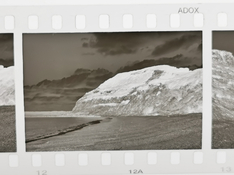Alan Johnson
Subscriber
- Joined
- Nov 16, 2004
- Messages
- 3,220
This one shot developer can give pictorial results with Adox CMS20 II or Spur Ultra R 800.
It is detailed in The Film Developing Cookbook 1998 p97 and in FDC 2020 p132.
In FDC 2020 p134 it is noted that HQMS might replace glycin.
I made and use a 10x concentrate:
Demin water 40C ...............800ml
Sodium Sulfite anh..............40g
Phenidone.............................2.5g..(dissolve in isopropanol)
Glycin......................................2.5g
Sodium Bicarbonate..........50g
Demin water to......................1L
Dilute 1+9 to make the working solution, pH ~9
Develop 30min 20C, agitate at start then every 3 min.
For shorter times use higher temperature:
 www.digitaltruth.com
www.digitaltruth.com
This is with a 5 element lens P&S camera on Spur Ultra R 800 at EI=25:
It is detailed in The Film Developing Cookbook 1998 p97 and in FDC 2020 p132.
In FDC 2020 p134 it is noted that HQMS might replace glycin.
I made and use a 10x concentrate:
Demin water 40C ...............800ml
Sodium Sulfite anh..............40g
Phenidone.............................2.5g..(dissolve in isopropanol)
Glycin......................................2.5g
Sodium Bicarbonate..........50g
Demin water to......................1L
Dilute 1+9 to make the working solution, pH ~9
Develop 30min 20C, agitate at start then every 3 min.
For shorter times use higher temperature:
Massive Dev Chart Film Development, Film Developing Database
This is with a 5 element lens P&S camera on Spur Ultra R 800 at EI=25:














